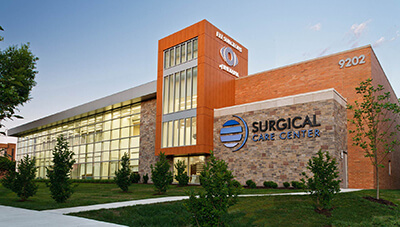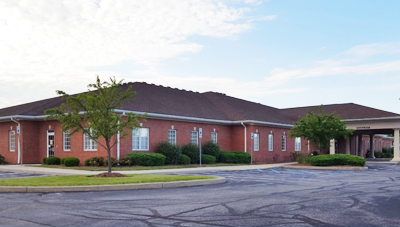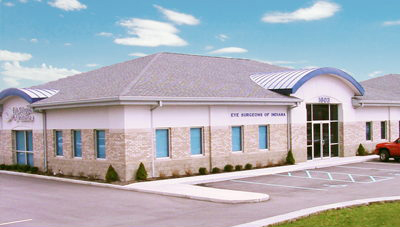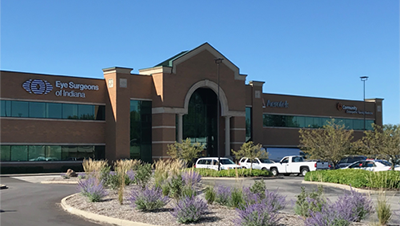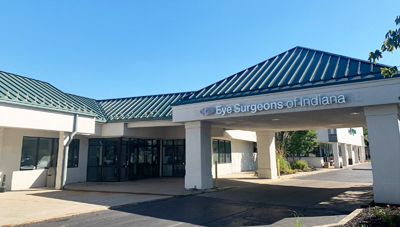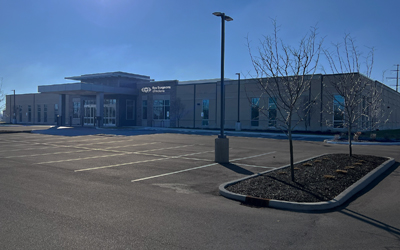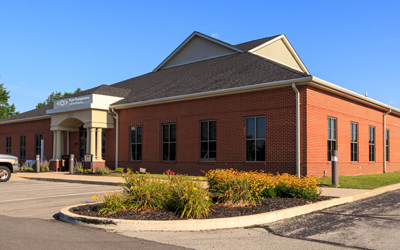Common Post-Op Conundrums
Posted by: Eye Surgeons of Indiana in Eye Health
With a temporary hiatus from surgery, I thought I’d take some time to review some issues I see from time to time following cataract surgery. There can be many minor side effects or complications from cataract surgery, the vast majority are transient and very mild. When I review the risks involved with surgery with patients prior to surgery, I often highlight major complications and give a “blanketed” explanation for other minor complications. In post-op care, I’ve run across patients that have told me, “they never told me that.” I don’t truly believe we never told them about complications, but highlighting each possible complication following surgery would likely yield a consult lasting hours. I also reference many of these post- op conundrums as mild, that is, mild in the grand scheme of things, but these issues can seem extremely bothersome at the time. Again, most issues seem to resolve on their own, or can be alleviated with our help.
My credentials:
Five years ago I was brought in at Eye Surgeons of Indiana to help aid in post-op care and assist in medical eye care. I spent my first year as a fellowship year with the practice where I learned as much as I could as fast as I could. I spent time with each of our surgeons and experienced medical optometrists learning their routines and incorporating their strengthens apart of my arsenal. Learning in this profession never ends and I am extremely blessed to be apart of the Eye Surgeons of Indiana team. My competence and medical decision making have certainly been elevated and influenced in a tremendous way from all the doctors at Eye Surgeons of Indiana. On a given month, I generally average seeing about 300-350 post-op patients. This can be from a variety of procedures or surgeries we perform, however, the majority are cataract post-op patients. Over the five years I’ve seen over 15,000 post-op patients. Now you know more about me, lets get to it. In no particular order:
Positive or Negative Dysphotopsia
As humans, our brains are expansive but can get used to a routine. When we have changes, sometimes it can take time to overcome. When we remove the cloudy, natural lens of the eye and replace it with an artificial lens implant, this is a new change for our brain to process. Commonly after surgery, patients can experience a flash of light (often times) in the temporal periphery. A flash of light from the edge of the lens is called a positive dysphotopsia. This quite commonly goes away within a few days. This is never progressive and will never grow in size or area. Conversely, there can also be a shadow in the temporal periphery, which is called negative dysphotopsia. This is a result of an internal reflection of light rays within the intraocular lens (IOL). Just like the flashes, the shadow should never worsen. Over time, 99.9% of these cases resolve. I find it goes away most often after the fellow eye has been addressed. That way there is no reference between the two eyes. Meaning after the first surgery, the brain can tell the subtle difference between the one eye (that hasn’t had surgery yet) and it’s natural lens versus the other eye (that has had surgery) with an IOL. It’s important to note that patients do not have control over this but is a subconscious observation of the brain. Again, most of these cases go away with time. As everyone is different, each case can take a different amount of time to resolve, possibly many months.
Foreign Body Sensation (FBS)
The feeling that there is something in the eye is very common. We make at least two incisions to enter the eye during surgery, maybe more, depending on the case. The cornea is the clear front dome of the eye where the incisions are made and contain a lot of nerve endings. I almost expect FBS at the day after surgery appointment. The caveat is how long will the FBS sensation last. FBS can last only a couple days or persist for months. The post-op drops will sometimes help with the sensation, although further treatment might be needed. Artificial tears are fine to use after surgery and can help with lubrication of the eye and decrease symptoms. Dry eye can be a factor in persistent dryness or FBS after surgery. When possible, it is important to treat dry eye before surgery to help alleviate these post-op problems.
Inability to Read
This is a two scenario problem. The first scenario is a patient who was near-sighted (A minus prescription). This patient type, before cataract surgery, can read without glasses but would need them to see far away. For convenience, they may wear bifocals or progressive glasses, although for long term reading they may remove glasses. If a distance aim is to be achieved after cataract surgery (aiming for the best distance vision), readers or glasses will be needed to see up close. Essentially, this patient’s ability to see would be flipped (minimal need for glasses for distance, more dependent for readers/glasses at near). Understand from a patient’s perspective, your vision before cataract surgery does not dictate your vision after cataract surgery. Understand the goals for how the vision will be after surgery in the pre-op appointment.
The second scenario is for the folks who make the excellent choice in investing in a multifocal IOL. These lenses allow for vision in the distance and near (see multifocal IOL section below). Multifocal IOL’s do have limitation to their abilities. They do not restore near vision to the ability of your past 20 year old self, more your 40-45 year old self. Technology and the physics of these IOL’s are constantly improving so this issue is becoming less evident. Although, our dependency on smart devices have made our visual demands more vast and we require seeing clearly at many different distances. It’s not as easy to see just here or there, we demand to see clearly everywhere and there aren’t any IOL’s on the market that realistically focus for distances like our 20 year old natural lenses. Now, read the next section…
Multifocal IOL Adverse Issues
As I stated previously, technology improvements of these lenses help limit potential problems with these lenses. Having sub adequate near vision occasionally comes up. Concentric rings or halos around lights, mainly at night, is occasionally mentioned as well. Neuro-adaption to these lenses take time. We don’t remember how we first started to see, it just came naturally while we were learning about the world around us. The new lenses are just that, the start of your new vision, and it can take some time to get used to the nuisances of these new IOL’s. Learning can take time, many months may be needed to help alleviate any adverse symptoms.
High Eye Pressure
Eye pressure can vary in the post-op period. When we measure intraocular pressure (IOP) the day after surgery, the pressure can vary. If elevated, it is often not a problem. High eye pressure is a risk for developing glaucoma, but needs to be sustained over a longer period of time. If someone’s pressure was 25 for years, that may be an issue. After cataract surgery, this would not likely be an issue as the IOP would come down over the next day or two. Of course, if there are other factors to consider like a pre-existing diagnosis of glaucoma or extent of IOP elevation. For some folks, we perform a minimal invasive glaucoma surgery (MIGS procedure) at the time of cataract surgery. During the post-op period, we would not truly evaluate IOP for long term success but will have to wait a few months to see a true IOP. In addition to the day after surgery, IOP may rise due to the post-op drops containing a steroid. This can illicit an “IOP steroid response” that can be counteracted by taking IOP lowering drops or just reducing or stopping the post-op drops. The post-op drops should only be stopped at the discretion of the doctor.
Rebound Inflammation
Rebound inflammation happens at the end of using post-op drops. For 99% of patients, 1 month of using drops will do the treat to keep inflammation at bay. Occasionally, inflammation is not 100% gone at the end of that time and can come roaring back. Light sensitivity and eye pain are the usual symptoms here. Going back on the drops typically curbs symptoms quickly.
Macular Edema (Swelling)
The macula is a specific part of the retina or light-capturing part of the eye. It exists in the back portion of the eye and has a bunch of densely packed light-capturing cells in this specific area. The macula is responsible for fine tune vision. Inflammation is simply caused from the process of cataract surgery itself. If inflammation trickles from the front (where the lens is) to the back (where the macula is) there can be swelling of the macula and cause blurry vision. We can diagnosis this with diagnostic testing that we have in the clinic. It can go away by using post-op drops longer or with putting medicine further back in the eye with a retinal specialist.
Failure to Meet Expectations
Occasionally everything goes well. We get the vision we desired for a patient following cataract surgery yet they aren’t happy with the result. We are all different. Sometimes we become specialized in how we use our eyes and can become very use to what we can see at varying distances. That scenario can be hard to predict and identify at the cataract consultation before surgery. It can be extremely difficult at times to give a patient their exact same vision after cataract surgery. We utilize the latest technology and have excellent surgeons with a lot of experience to help get the best results. It can take time to get used to the new vision after surgery. Ask questions and understand goals for your vision before surgery.
These are a few minor issues that I occasionally see in the post-op period and tend to go away with time. I see a lot of patients and the majority of them do excellent without any issue. Complications following cataract surgery are fixable and we monitor patients closely after surgery. We truly are a team ready to help if there are any issues following cataract surgery.

